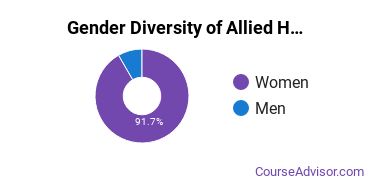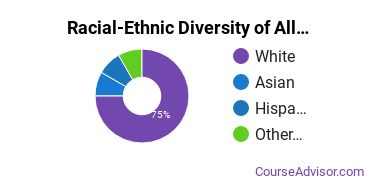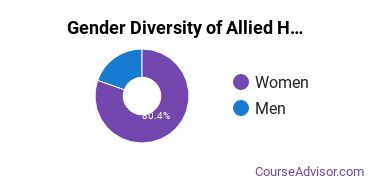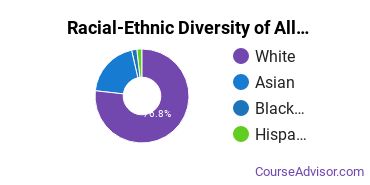Allied Health Professions at Marist College
Marist is located in Poughkeepsie, New York and has a total student population of 6,600.
Want to know more about the career opportunities in this field? Check out the Careers in Allied Health Professions section at the bottom of this page.
Featured Marist College Programs
Learn about start dates, transferring credits, availability of financial aid, and more by contacting the universities below.
Take your associate degree in an allied health field to the next level with this specialized transfer friendly online bachelor of science from Southern New Hampshire University.
Marist Allied Health Professions Degrees Available
- Bachelor’s Degree in Allied Health
- Master’s Degree in Allied Health
Featured Marist College Programs
Learn about start dates, transferring credits, availability of financial aid, and more by contacting the universities below.
Take your associate degree in an allied health field to the next level with this specialized transfer friendly online bachelor of science from Southern New Hampshire University.
Marist Allied Health Professions Rankings
The allied health major at Marist is not ranked on College Factual’s Best Colleges and Universities for Allied Health Professions. This could be for a number of reasons, such as not having enough data on the major or school to make an accurate assessment of its quality.
Allied Health Student Demographics at Marist
Take a look at the following statistics related to the make-up of the allied health majors at Marist College.
Marist Allied Health Professions Bachelor’s Program

About 60% of those who receive a bachelor's degree in allied health at Marist are white. This is typical for this degree on the nationwide level.
The following table and chart show the race/ethnicity for students who recently graduated from Marist College with a bachelor's in allied health.

| Race/Ethnicity | Number of Students |
|---|---|
| Asian | 0 |
| Black or African American | 0 |
| Hispanic or Latino | 0 |
| White | 3 |
| International Students | 0 |
| Other Races/Ethnicities | 2 |
Marist Allied Health Professions Master’s Program

Of the students who received a allied health master's degree from Marist, 71% were white. This is above average for this degree on the natiowide level.
The following table and chart show the race/ethnicity for students who recently graduated from Marist College with a master's in allied health.

| Race/Ethnicity | Number of Students |
|---|---|
| Asian | 4 |
| Black or African American | 4 |
| Hispanic or Latino | 5 |
| White | 35 |
| International Students | 0 |
| Other Races/Ethnicities | 1 |
Concentrations Within Allied Health Professions
The following allied health concentations are available at Marist College. The completion numbers here include all graduates who receive any type of degree in this field from Marist College. Some of these focus areas may not be available for your degree level.
| Concentration | Annual Degrees Awarded |
|---|---|
| Physician Assistant | 56 |
| Athletic Training | 12 |
Related Majors
- Mental & Social Health Services
- Rehabilitation & Therapeutic Professions
- Clinical/Medical Laboratory Science
Related Programs
Learn about other programs related to Marist College that might interest you.
Take your associate degree in an allied health field to the next level with this specialized transfer friendly online bachelor of science from Southern New Hampshire University.
Careers That Allied Health Grads May Go Into
A degree in allied health can lead to the following careers. Since job numbers and average salaries can vary by geographic location, we have only included the numbers for NY, the home state for Marist College.
| Occupation | Jobs in NY | Average Salary in NY |
|---|---|---|
| Health Specialties Professors | 22,170 | $127,230 |
| Emergency Medical Technicians and Paramedics | 17,520 | $44,120 |
| Physician Assistants | 12,060 | $117,000 |
| Surgical Technologists | 5,750 | $55,310 |
| Respiratory Therapists | 5,740 | $74,890 |
References
*The racial-ethnic minorities count is calculated by taking the total number of students and subtracting white students, international students, and students whose race/ethnicity was unknown. This number is then divided by the total number of students at the school to obtain the racial-ethnic minorities percentage.
- College Factual
- National Center for Education Statistics
- O*NET Online
- Image Credit: By Bpg00765 under License
More about our data sources and methodologies.

